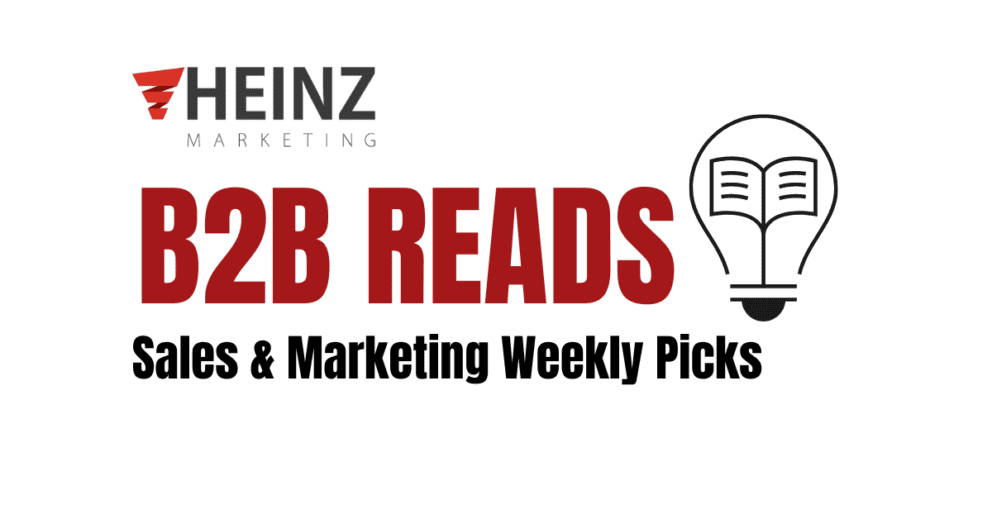3 Strategic Marketing Moves That Promote Efficient Growth

By Maria Geokezas, Chief Operating Officer at Heinz Marketing
Experts have slashed their former growth projections for 2023. So, it’s no surprise campaign spending is down across almost all channels.
At this point, there’s no clear answer to when things will pick back up. And it might feel like the sky is falling if you haven’t taken the time to hone their foundations.
But once you’ve mastered your marketing foundations–such as your ideal customer persona, buyer journey, and supporting tech–creating a path forward becomes much less challenging. After that, it’s all centered on strategic implementation.
In the post below, we look at three tactics to help you grow efficiently during a decline.
Define What Works
Take a moment and scroll through your social media. If you toggle between platforms, you’ll likely notice the ad types change from text to images and, increasingly, video. And if you took it a step further and looked at your partner or colleague’s feed, you’d notice the offer and messaging change to fit their interests as well.
At this point, every audience expects to see personalized advertising.
That’s why you need to get specific about what’s working by channel, audience segment, primary offer, and messaging if you want to capture and keep your audience, especially when everyone is hyper-aware of where their money is going.
For example, let’s say you’re promoting a new sales CRM. You might start your marketing with a text-heavy ad with messaging about improving lead generation. Then, you could run the campaign on LinkedIn and Facebook—and you wouldn’t be wrong.
But it’s the equivalent of opening an ice cream shop and only serving vanilla!
Sure, it appeals to the broadest audience, but if you only had enough money to buy one ice cream a year, would you choose vanilla?
After all, not every salesperson handles lead generation. What about the salespeople who focus on closing and managing accounts?
Beyond that, LinkedIn and Facebook provide very different user experiences. So, a text ad might get lost in the Facebook feed but excel on LinkedIn, where the audience is accustomed to reading content.
You can’t run the same creative and offer to everyone, everywhere, and expect it to be efficient.
Instead, you have to go deep before you go wide. Meaning you must learn what works at a small scale before you can double down on one overarching strategy.
However, discovering what works across different platforms and personas isn’t easy when you’re only running broadly targeted mega-campaigns. So instead, you need a more nuanced approach to testing.
Start Small to Grow Big
Rather than throw large sums of capital at one or two campaigns, try testing a series of smaller marketing campaigns looking at a single element—for example, your offer.
Smaller campaigns have a few downsides, but the benefits far outweigh them.
Yes, the marketing spend may be smaller than you’re used to, and the volume of leads may be lower, but it’s money well spent. In a downturn, it’s more about qualified leads than leads at any cost.
When you narrow the scope of your marketing campaigns, you can test many ideas at once to figure out what does and doesn’t work for each of your target personas.
Another upside for small tests is you never waste your entire campaign spend on a strategy that might fail. Because sometimes, even with the best plan, the timing can be off, or other events outside your control can throw your big campaign into a tailspin.
Small tests allow you to perfect each part of your campaign one component at a time. That way, when it’s time to scale, you’re confident it’s going to fuel efficient growth.
Measure the Immediate and Lasting Results
Too often, we use vanity metrics to measure campaign success—metrics like views and shares. However, those vanity metrics don’t equate to sales and revenue and mean very little in a down market.
When times are tough, you must look at metrics that matter, or in other words, show demonstrable results. This is especially true if you have a long sales cycle where you cannot immediately track revenue against your marketing investment.
To get the whole picture, you must understand how to interpret leading and lagging metrics.
Your leading metrics include measures such as:
- Campaign impressions
- Campaign engagement (with key accounts)
- Marketing qualified leads
- Sales qualified leads
These leading metrics are easier to track and directly tie to a specific marketing effort.
Your leading metrics are valuable because they give you insights into what channels, offers, and messages your audience segments are responding to. But without taking it a step further and seeing where they lead, you don’t honestly know if they impacted the bottom line—which matters most.
When you need to understand what’s driving revenue growth, you look at lagging metrics. Some key lag metrics include:
- Net new accounts
- Average customer value
- Overall marketing return on investment (MROI)
You may not always be able to point to a specific campaign that leads to an increase in overall revenue. But if your net new accounts skyrocket after you launch a multi-channel engagement campaign, you know you’re onto something.
Ultimately, you have to get granular when budgets tighten, and businesses turn away from the growth-at-all-costs mindset. Small tests that allow you to define what’s working across platforms and audiences, paired with critical lead and lag metric data, ensure you aren’t wasting your limited marketing spend on the wrong marketing campaigns.






